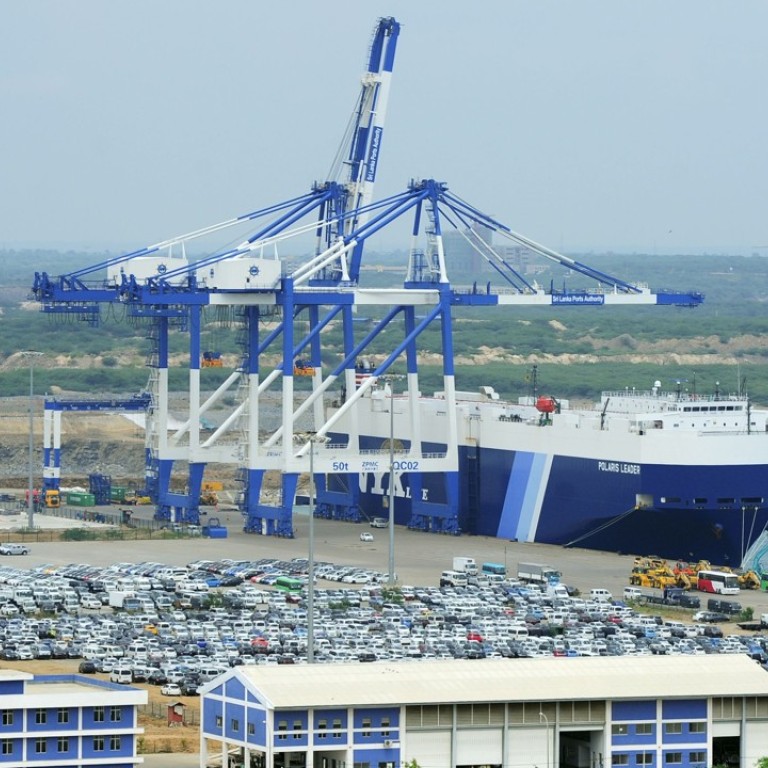
Chinese private investment in belt and road projects may be losing steam
- Investment share of Chinese private firms fell 12 per cent in first half from a year ago, US think tank finds
- American Enterprise Institute says decline in forex reserves has further complicated efforts to finance roads, railways and ports under the initiative
Chinese private firms are less enthusiastic about investing in the country’s vast trade and infrastructure strategy and Beijing is becoming more wary of throwing money at the project as it comes under pressure from the trade war and falling forex reserves, a US think tank says.
State-owned companies remain the dominant investors in “Belt and Road Initiative” projects – mostly in energy and transport – but the share of private firms is shrinking, according to a report released on Thursday by the Washington-based American Enterprise Institute.
The private company share stood at 28 per cent of overall investment in the projects by the end of June, the report said. It was down by 12 per cent in the first half from the same time a year ago.
The report by AEI research associate Cecilia Joy-Pérez and resident scholar Derek Scissors cited figures from the Chinese Global Investment Tracker by the institute and another conservative American public policy think tank, The Heritage Foundation.
Mike Pence to unveil rival to ‘dangerous’ Belt and Road Initiative at Apec summit
It comes as Beijing is locked in an escalating tariff war with Washington that is fuelling fears of a further economic slowdown in the world’s second largest economy.
A decline in foreign exchange reserves – which Beijing has been using to pay for projects under the belt and road strategy – has further complicated its efforts to finance new roads, railways and ports as it tries to revive an ancient network of trade routes connecting China with the rest of Asia, Europe and Africa, according to the researchers.
China holds more than US$3 trillion in forex reserves, but they fell sharply from a May 2014 peak through late 2016. In October, the reserves fell by about US$34 billion as the central bank moved to defend the yuan from excessive depreciation.
“Reserves are further threatened by the possibility of a serious interruption of exports to the US,” the report said. “Nervousness in Beijing about the balance of payment would cap funds for the BRI.”
Rogue Australian state Victoria’s Belt and Road deal with China eyes ‘unimpeded trade’, but experts say it wasn’t wise to sign up
President Xi Jinping’s trillion-dollar investment programme is now in its fifth year and has come under intense scrutiny in recent months, with questions swirling about whether the infrastructure investments provide good value for money – or just a way for Beijing to win friends and spread influence.
Overall, Chinese investment now stands at US$148 billion, while the total value of projects funded by China in the past 4½ years to June reached US$256 billion, according to the report.
Douglas Zhihua Zeng, a senior economist with the World Bank, said Chinese companies looking for belt and road opportunities should assess the risks before they take the plunge.
“The BRI is a proposal but it is the projects on the ground that are making profits, and companies should make adequate risk assessments before they take the next step,” Zeng said. “For private companies, the top priority is to survive, so if the companies are under intense cash-flow pressure and are unable to get loans, they may cancel their overseas investment plans.”
Botched Chinese railway project in Africa is a warning to belt and road investors
Li Wei, a professor at prestigious Peking University, warned in an online article last month that Beijing, under trade pressure from the US, should be cautious about the risk of a “hard landing” of any belt and road projects.
“[We need to ensure] the soft landing of the BRI projects, and make strategic choices if necessary, to focus on key areas, countries and projects … to move according to our capabilities and in a cautious way, to make fuller assessments of each kind of risk, to ensure that the BRI won’t become a diplomatic and economic burden,” Li wrote.

